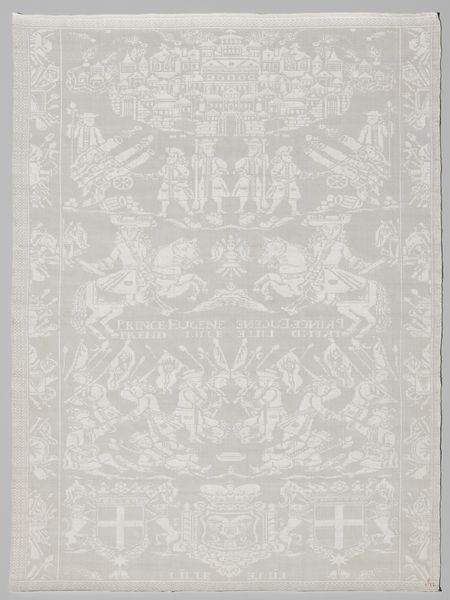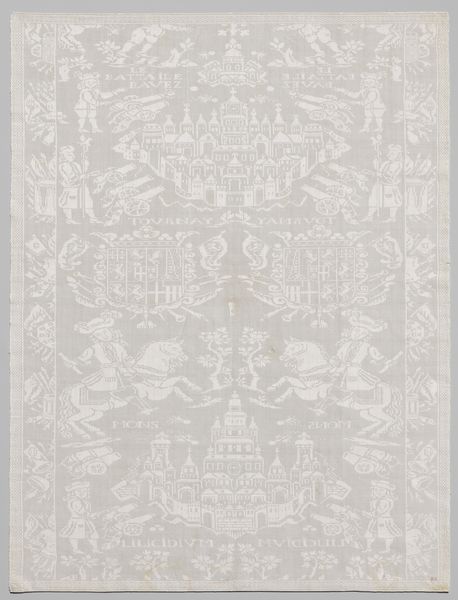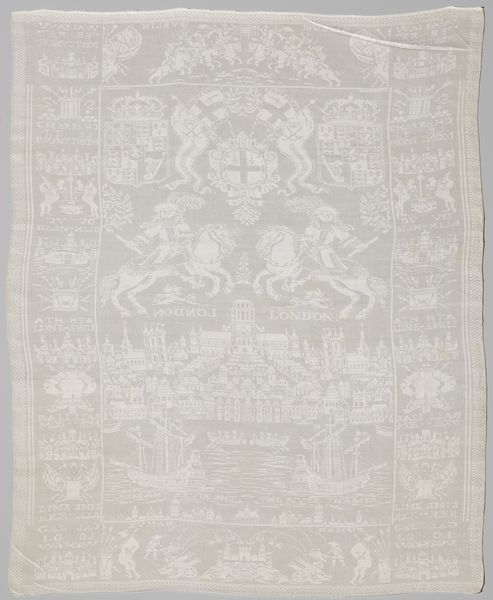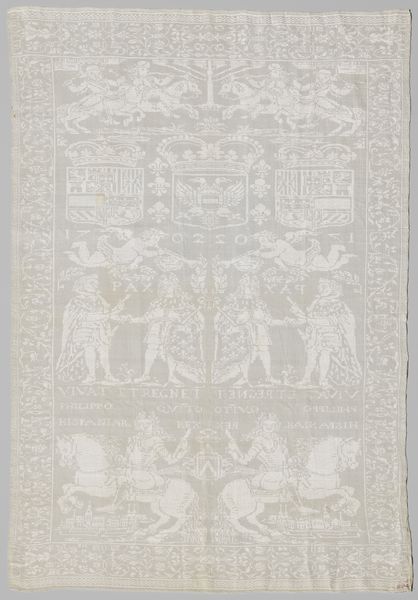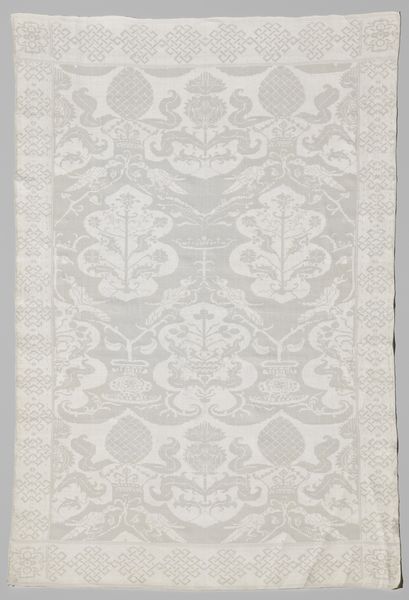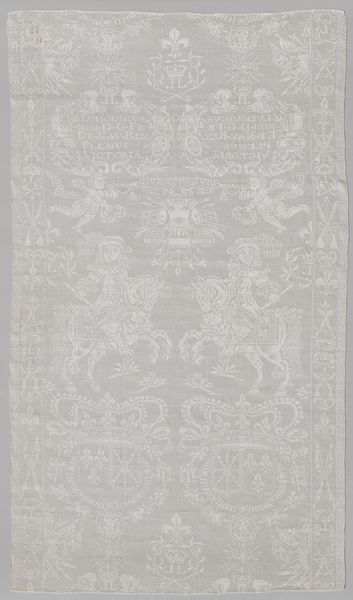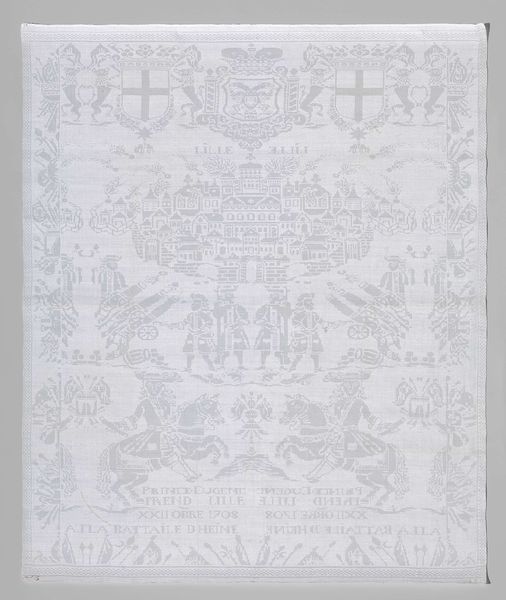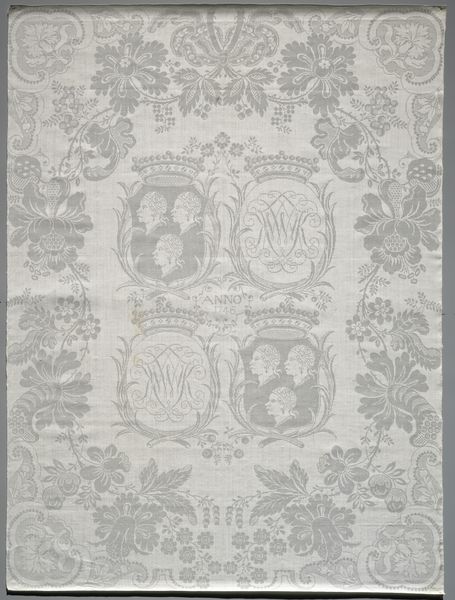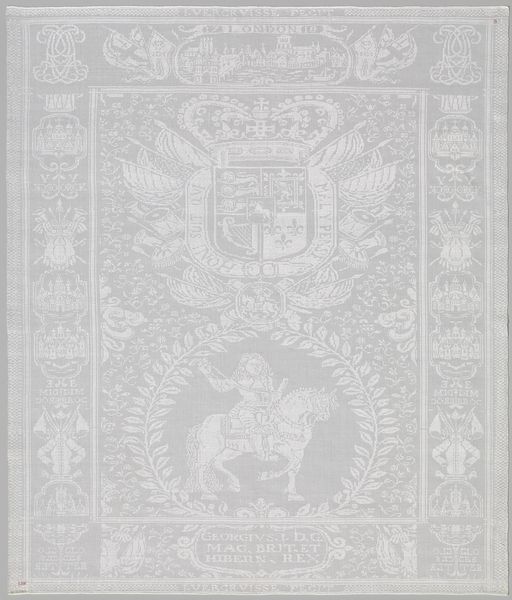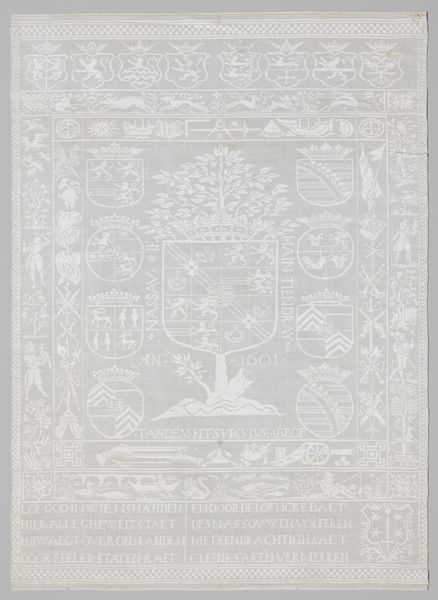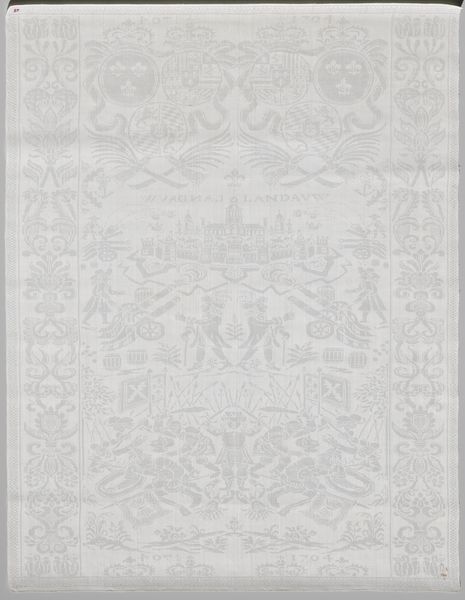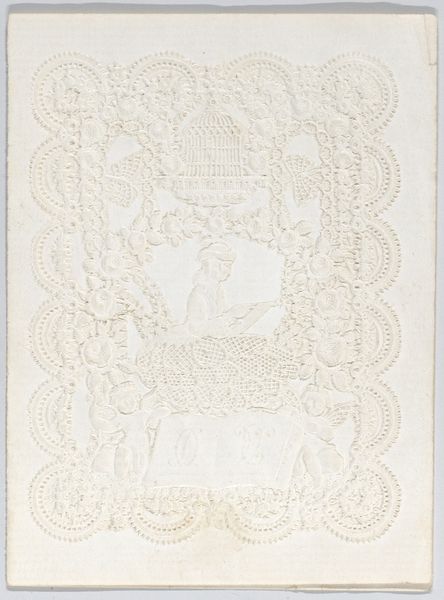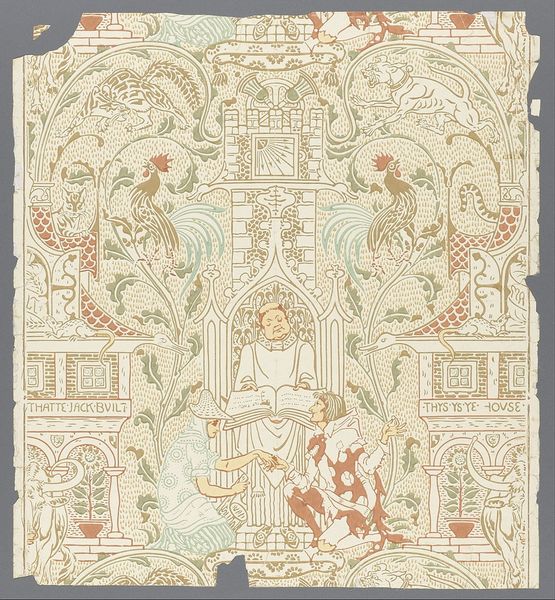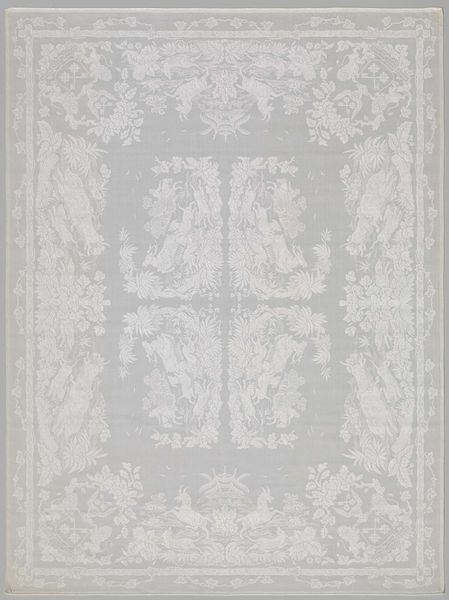
Servet met London, de Thames, Engelse wapens, koning Willem III en Mary Stuart en veroverde steden after 1695
0:00
0:00
anonymous
Rijksmuseum
print, textile
#
natural stone pattern
#
narrative-art
#
baroque
# print
#
textile
#
pattern design
#
repetitive shape and pattern
#
fabric design
#
repetition of pattern
#
vertical pattern
#
pattern repetition
#
cityscape
#
textile design
#
imprinted textile
#
layered pattern
Dimensions: height 110 cm, width 90 cm
Copyright: Rijks Museum: Open Domain
This linen damask cloth, made by an anonymous artist, commemorates William of Orange and Mary Stuart's ascension to the English throne in 1689. It is filled with imagery relating to their reign. Damask weaving was an industry that was centered in the Dutch Republic at this time. It required highly specialized looms and expert weavers to produce the complex patterns that you see here. These cloths were luxury items, made for wealthy households and displayed on special occasions. The choice of imagery is no accident. The depiction of London, the Thames, and English heraldry served to celebrate the new monarchs and promote a sense of national pride. The inclusion of conquered cities reinforces the idea of England's power and influence under William and Mary. Textiles like this offer art historians valuable insights into the political and social climate of the time, the role of Dutch industry, and the way that royal power was projected through material culture. We can better understand such objects by consulting historical documents, trade records, and studies of textile production.
Comments
No comments
Be the first to comment and join the conversation on the ultimate creative platform.
